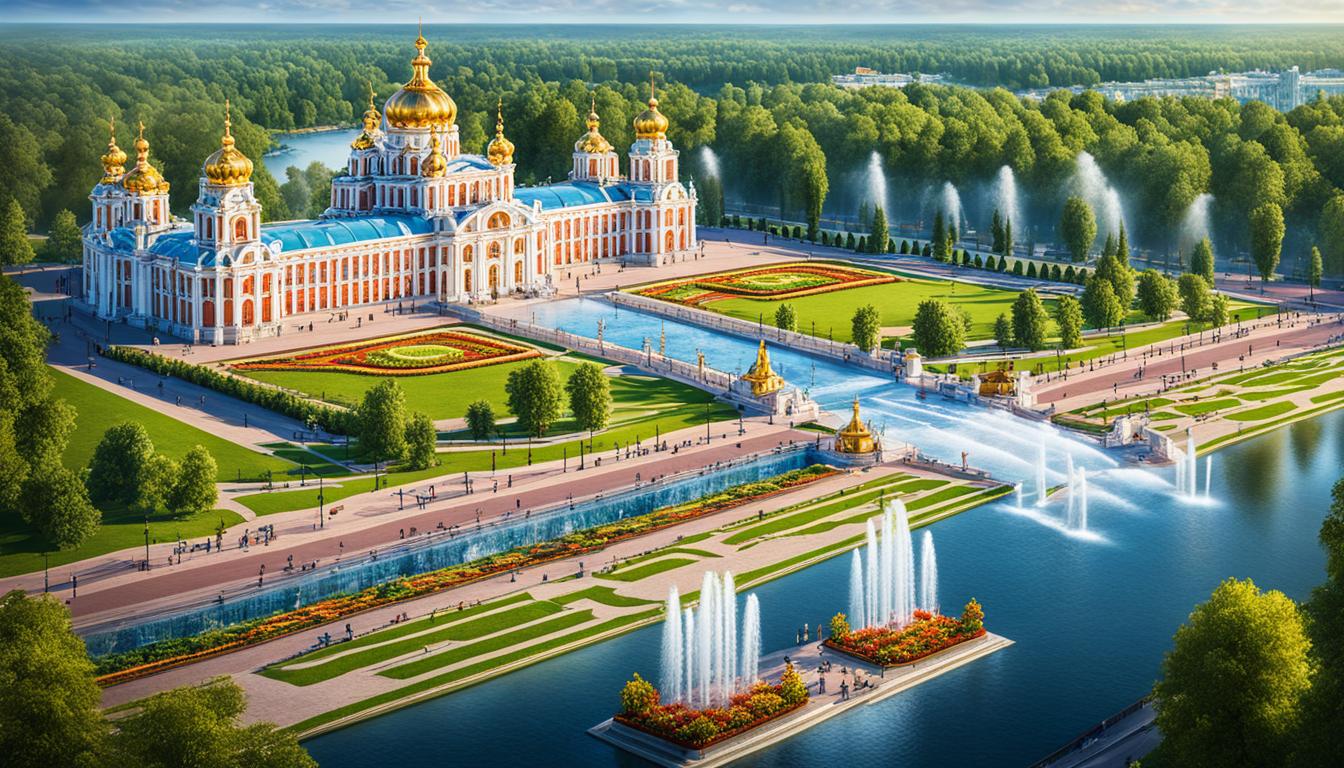Step Back in Time: Explore These Historical Landmarks in Russia!
Have you ever wondered what secrets lie within the grand, towering structures that dot the Russian landscape? From the iconic Kremlin fortress in Moscow to the vibrant Red Square, Russia’s historic landmarks offer a captivating glimpse into the country’s rich and storied past1. These UNESCO World Heritage sites and hidden gems invite visitors to step back in time and immerse themselves in Russia’s cultural heritage.
As the largest country in the world, spanning over 17 million square kilometers and 11 time zones1, Russia boasts a diverse array of architectural marvels and historic towns that have stood the test of time1. Venture beyond the capital to discover centuries-old towns like Suzdal, founded in 1024 and featuring over 40 monuments and 200 architectural sites1, or the Kazan Kremlin, a UNESCO-recognized landmark showcasing historic buildings from the 10th to 19th centuries1. Each of these destinations holds the power to transport you to a bygone era, where the echoes of Russia’s past reverberate through the present.
Key Takeaways
- Discover the iconic Kremlin fortress and Red Square in Moscow, both UNESCO World Heritage sites.
- Explore historic towns like Suzdal, founded in 1024, and the Kazan Kremlin, a UNESCO landmark.
- Marvel at the grandeur of architectural marvels like the Church of the Savior on Spilled Blood in Saint Petersburg.
- Immerse yourself in Russia’s rich cultural heritage and step back in time at these captivating historical landmarks.
- Uncover the secrets and stories that lie within these timeless structures and towns across Russia’s vast landscape.
Marvel at the Grandeur of Moscow’s Architectural Gems
Moscow, the vibrant capital of Russia, is home to a plethora of historical landmarks, including the magnificent Tsaritsyno Park and Museum2. Spanning an impressive 405 hectares, this former royal residence of Catherine the Great is a must-visit destination for history enthusiasts and nature lovers alike2. Visitors can marvel at the architectural masterpiece of the Grand Palace, which showcases a blend of Gothic and Russian Revival styles2. The park also offers a tranquil escape, with its picturesque gardens, serene ponds, and the mesmerizing light-dynamic fountain.
Beyond Tsaritsyno, the nearby Kolomenskoye Estate and Gorky Park provide additional opportunities to explore Russia’s rich architectural heritage and enjoy various recreational activities2. Moscow’s skyline is adorned with majestic spires and towering structures, emphasizing the city’s grandeur and architectural prowess2. The Bolshoi Theatre and the Cathedral of Christ the Saviour are architectural gems reflecting Moscow’s cultural heritage and artistic achievements2.
Whether you’re captivated by the palace-museum or drawn to the city’s other architectural wonders, Moscow offers an unforgettable journey through time and space2. The city’s diverse array of architectural styles, from medieval fortresses to neoclassical buildings to modern skyscrapers, showcases its rich history and cultural heritage2.
Historical Landmarks in Russia: Immerse Yourself in the Past

Nestled at the heart of Russia’s historic landscape is the iconic Red Square, a focal point in the social and political history of the country. Red Square dates back to the late 15th century and has witnessed many significant events, from executions and demonstrations to parades and speeches3. Surrounding this expansive square are some of Russia’s most renowned landmarks, including the Kremlin, the State Historical Museum, and the breathtaking Cathedral of St. Basil the Blessed4.
Visitors can explore the Lobnoye Mesto, a white stone platform where edicts and decrees were once read to the masses, and pay their respects at Lenin’s Tomb. The square is also home to the monument to Kuzma Minin and Prince Dmitry Pozharsky, leaders of the army that forced the surrender of Polish invaders in 16124.
Moscow’s historical landmarks offer a captivating glimpse into the country’s rich past. From the grand architecture of the Kremlin to the iconic St. Basil’s Cathedral, each site tells a story of Russia’s tumultuous history and its enduring cultural heritage4. Whether you’re intrigued by the Soviet era or fascinated by the country’s pre-revolutionary roots, a journey through these timeless landmarks promises to be a truly immersive and unforgettable experience345.
Conclusion: Unveiling Russia’s Timeless Heritage
Russia’s rich history is embodied in its iconic landmarks, from the grand Kremlin fortress with its imposing red brick walls spanning over 2,000 meters6 to the vibrant Red Square that serves as an iconic gathering place for significant events6. These historic sites not only showcase the country’s architectural marvels, such as the unique cathedrals and churches within the Kremlin complex6 and the stunning Grand Kremlin Palace that hosts official state events6, but they also hold immense cultural significance, providing visitors with a profound connection to the past.
Whether exploring the grand palace-museum of Tsaritsyno, immersing oneself in the history of Red Square, or discovering the hidden gems of Russia’s historic towns, travelers are sure to be captivated by the timeless heritage that permeates this remarkable country6. The Kremlin’s museums, for instance, offer insights into Russia’s rich history, art, and cultural heritage6, while the Arsenal building within the Kremlin complex houses a vast collection of historical weaponry and armor6. The Kremlin’s enduring legacy, serving as a symbol of national pride6, reinforces Russia’s status as a must-visit destination for history enthusiasts and cultural aficionados alike.
As evidenced by the work of photographers like William Craft Brumfield, who has captured the architectural marvels and landscapes of Russia over the past four decades7, the country’s historical landmarks offer a unique opportunity to step back in time and gain a deeper appreciation for its enduring legacy7. Through his stunning full-color images and the insights presented in his book “Journeys through the Russian Empire,”7 Brumfield invites discussion on the evolution of these architectural masterpieces and the preservation efforts that have shaped their history7.







